

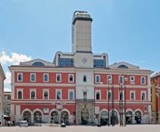
In 1293, the Commune acquired a number of houses here to build the Palazzo del Podestà (1295). This palace was restructured on a number of occasions in the 15th century. A new palace was built next to it in 1516, in order to provide a residence for the papal governor.
Palazzo Apostolico
In 1547, Pope Paul III initiated a campaign for the adaptation of these two buildings to form a new Palazzo Apostolico, as part of his strategy of imposing papal control over the region. Work proceeded slowly, because of the opposition of the Banderari (the faction in favour of civic autonomy). On the night of 25 August 1564, political tension turned to violence when the Banderari killed Gabriele Ranieri, the papal representative, and his entire family, along with members of the pro-papal Gigli, Manassei and Mazzancoli families. Pope Pius IV sent Monsignor Monte de’ Valenti da Trevi to suppress the uprising, a task that he achieved with great brutality. The palace was fortified, and the heads of a number of the rebels adorned it for over a year. The arms of Pius IV, which were inserted into the façade in 1564 to symbolise the new situation, are now in the Civic Lapidiary Collection. In 1567, Michelangelo Spada prevailed upon Pope Pius V to allow the return of goods confiscated from the Commune, in return for the payment of a substantial fine.
In 1572, a group of dissidents stormed the palace to steal weapons and release prisoners in order to attack Papigno, a village owned by Narni. Pope Gregory XIII excommunicated the city until Michelangelo Spada and two other ambassadors were able to negotiate absolution in return for yet another substantial fine.
Work to stabilise the structure of the palace was undertaken in 1616, under the papal architect, Girolamo Rainaldi, but it was destroyed in the earthquake of 1703. It was still in ruins the time of the unification of Italy in 1860.
Present Palace
The architect Benedetto Faustini effectively rebuilt the palace in 1862-78, and it is sometimes referred to as Palazzo Faustini:
-
✴its main facade (illustrated above) is in Piazza della Repubblica; and
-
✴a second facade (illustrated here) is in Piazza Solferino.
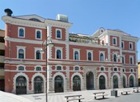
The palace acted as the Palazzo Comunale until 1972, when the city government moved its headquarters to Palazzo Spada. It was restored in 1994 and adapted to house the Biblioteca Comunale in 2004.
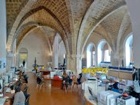
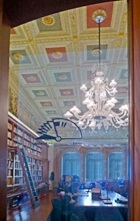
Torre del Commune (1441)
This tower was built to accommodate a public clock and also the bells of the city. It collapsed in 1482 and was not rebuilt until 1547. Like the rest of the palace, it was destroyed in the earthquake of 1703. It was rebuilt along with the rest of the palace in 1862-78.
This tower was destroyed in the bombardment of the Second World war and subsequently rebuilt.
Inscriptions
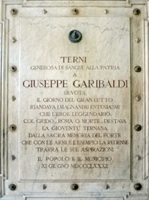
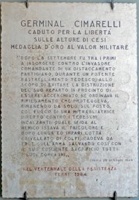
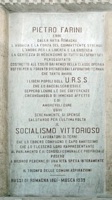
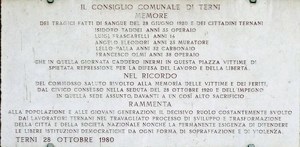
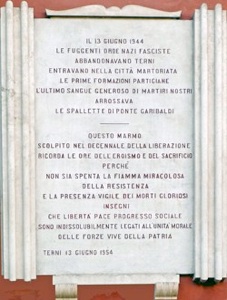
[More]

